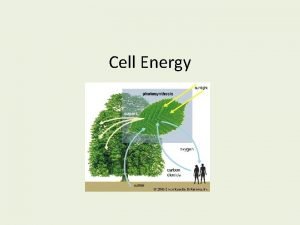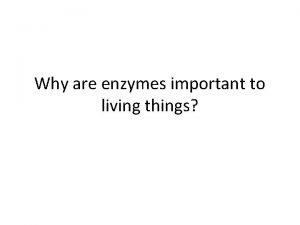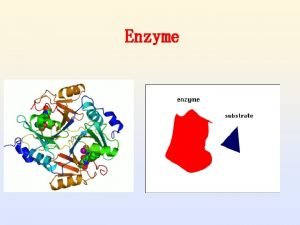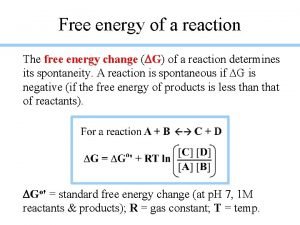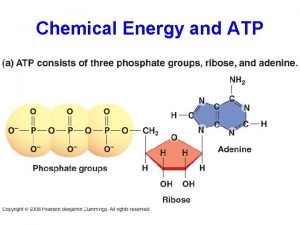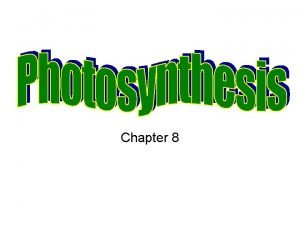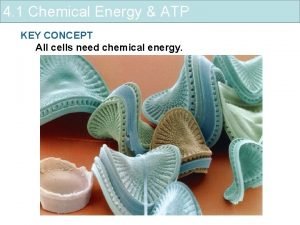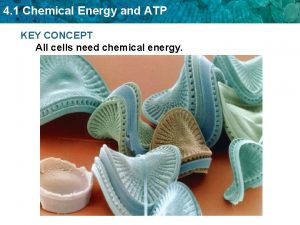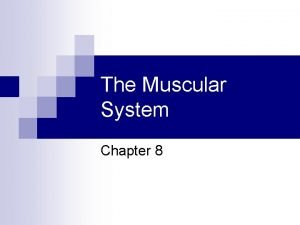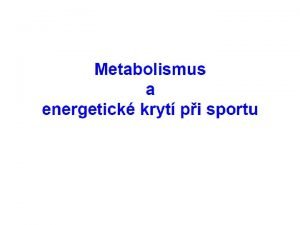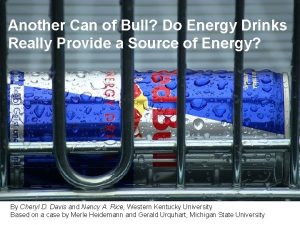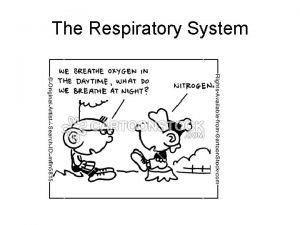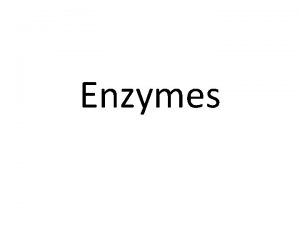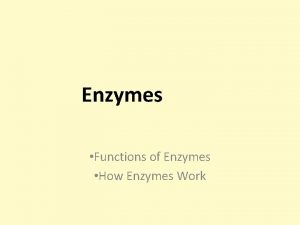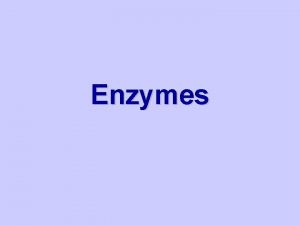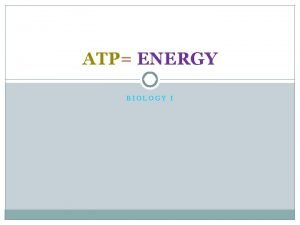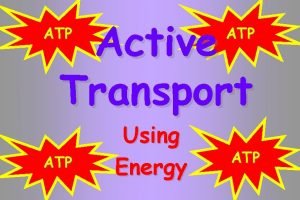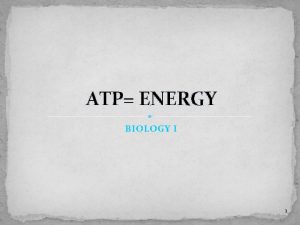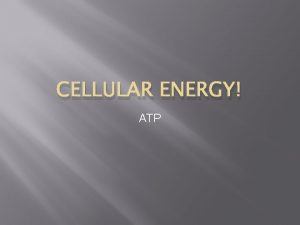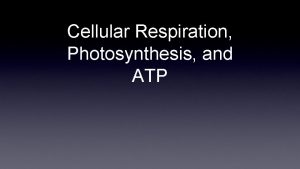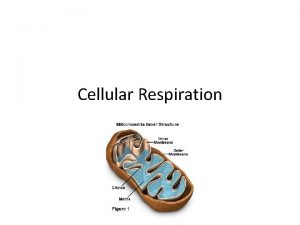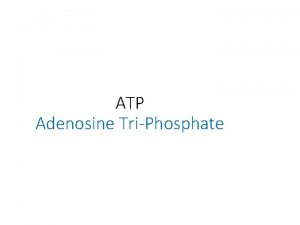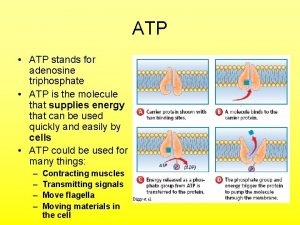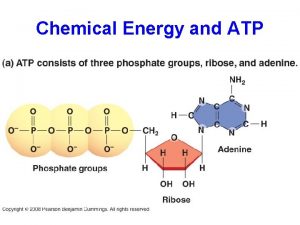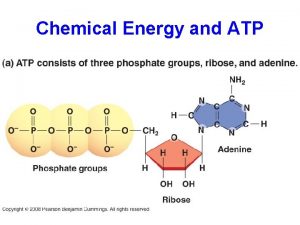ATP Enzymes Why do we need energy Energy

















- Slides: 17

ATP & Enzymes

Why do we need energy?

Energy for a cell � ATP= Adenosine Tri. Phosphate � Adenine, ribose, and inorganic phosphate (Pi)= AMP � ADP? � ATP? � What type of reaction when adding a phosphate group?


How does ATP transfer energy? O– –O P O ATP ADP O– O– –O–P O O– O– –O P O O– + O § ATP ADP u releases energy § ∆G = -7. 3 kcal/mole § Fuel other reactions § Phosphorylation u released Pi can transfer to other molecules § destabilizing the other molecules AP Biology u enzyme that phosphorylates = “kinase” 7. 3 energy

� http: //www. youtube. com/watch? v=ccg. Y 4 Osc. T 5 w

Enzymes!

Too much activation energy for life § Activation energy amount of energy needed to destabilize the bonds of a molecule u moves the reaction over an “energy hill” u glucose AP Biology Not a match! That’s too much energy to expose living cells to!

Reducing Activation energy § Catalysts AP Biology

Enzymes � Biological catalysts �Reduce activation energy without changing G! �Increase rate without being consumed!

Enzymes vocabulary substrate § reactant which binds to enzyme § enzyme-substrate complex: temporary association product § end result of reaction active site § enzyme’s catalytic site; substrate fits into active site substrate AP Biology enzyme active site products

Properties of enzymes § Reaction specific u each enzyme works with a specific substrate § Not consumed in reaction u single enzyme can catalyze thousands of reactions per second and not be consumed § Affected by cellular conditions u any condition that affects protein structure § temperature, p. H, salinity AP Biology

Lock and Key model § Simplistic model § H bonds between substrate & enzyme u AP Biology “key fits into lock”

Compounds which help enzymes Cofactors Fe in hemoglobin § Non-protein, small inorganic compounds & ions w. Help give active site proper shape § Many vitamins Mg in chlorophyll AP Biology

Competitive Inhibition § Substrate is blocked from reaching active site by a different molecule. AP Biology

Noncompetitive Inhibition § Molecule binds to site other than the active site (allosteric site) and changes shape of active site. AP Biology

Feedback Inhibition § Regulation & coordination of production u u product is used by next step in pathway final product is inhibitor of earlier step § allosteric inhibitor of earlier enzyme § feedback inhibition u no unnecessary accumulation of product A B C D E F G 1 2 3 4 5 6 X enzyme enzyme AP Biology allosteric inhibitor of enzyme 1
 Hey bye bye
Hey bye bye Why cells need energy
Why cells need energy How are enzymes important to living things
How are enzymes important to living things Enzyme definition
Enzyme definition Phosphoanhydride
Phosphoanhydride Atp energy
Atp energy How does atp release energy
How does atp release energy What type of energy is stored in atp
What type of energy is stored in atp Is atp chemical energy
Is atp chemical energy Which biochemicals provide the energy to regenerate atp
Which biochemicals provide the energy to regenerate atp Atp cp energy system
Atp cp energy system Atp energy drink ad assignment
Atp energy drink ad assignment Atp energy systems
Atp energy systems Dont ask
Dont ask Why architects need to use their ears
Why architects need to use their ears Shylock meaning
Shylock meaning Three living organisms
Three living organisms Why do we need to breathe
Why do we need to breathe

